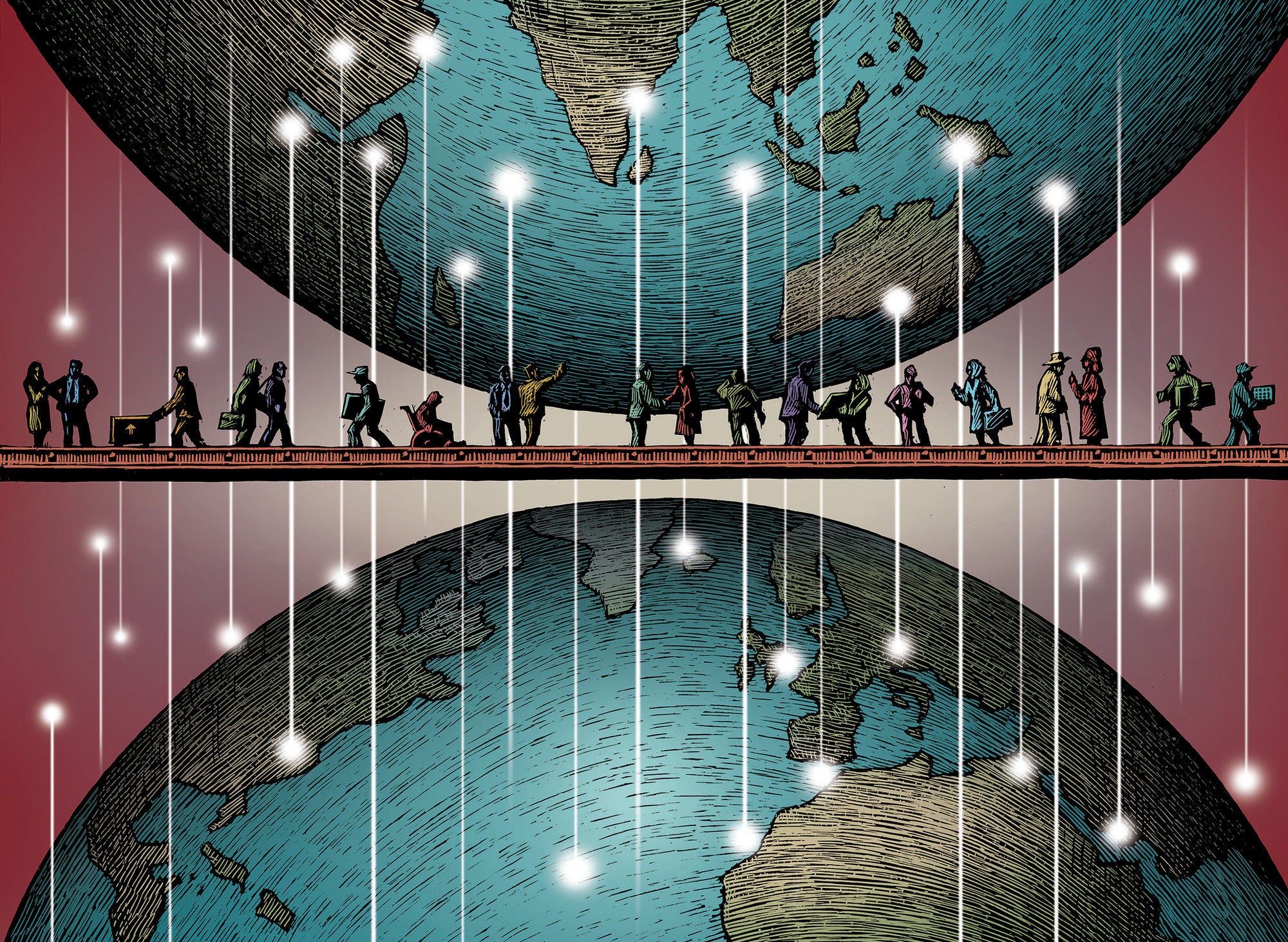In 2020, Canada received 185 000 new immigrants on a long-term or permanent basis (including changes of status), 46% more than in 2019. This figure comprises 33% labour migrants, 52% family members (including accompanying family) and 14% humanitarian migrants. Around 51 000 permits were issued to tertiary-level international students and 153 000 to temporary and seasonal labour migrants.
India, China and the Philippines were the top three nationalities of newcomers in 2019. Among the top 15 countries of origin, India registered the strongest increase (16 000) and the Philippines the largest decrease (‑7 200) in flows to Canada compared to the previous year.
In 2020, the number of first asylum applicants decreased by ‑67.4%, to reach around 19 000. The majority of applicants came from Mexico (1 800), India (1 600) and Nigeria (600). The largest increase since 2019 concerned nationals of Democratic People’s Republic of Korea (6) and the largest decrease nationals of India (‑3 600). Of the 31 000 decisions taken in 2020, 49.6% were positive.
Canada’s 2021‑23 Immigration Levels Plan envisions a further increase in new permanent migration: 401 000 admissions in 2021, 411 000 in 2022, and 421 000 in 2023. To meet these targets and to retain workers in essential occupations, new temporary pathways to permanent residence were opened. From May-November 2021, these new pathways to permanent residence were established for eligible foreign nationals currently employed in Canada – up to 50 000 applicants in health care and other essential occupations, as well as 40 000 international students who have recently graduated from a Canadian post-secondary institution. Non-capped streams with the same eligibility criteria are open to French-speakers with French language test results. In February 2021, Canada issued a historically large number of invitations to apply through its Express Entry system to eligible Canadian Experience Class candidates.
A number of new policies support Canada’s Francophone Immigration Strategy, which seeks to achieve 4.4% French-speaking immigrants, outside of Quebec, by 2023. Since October 2020, French-speaking candidates and bilingual candidates applying to economic immigration programs via the Express Entry application management system receive additional points for their language skills and a new national partnership with francophone organisations was introduced to streamline access to settlement services in French.
Building on the experience of regional economic immigration programmes, such as the Provincial Nominee Program and the Rural and Northern Immigration Pilot, Canada is currently working to develop and implement a Municipal Nominee Program, which would allow local communities, chambers of commerce and local labour councils to select permanent immigrants. The Economic Mobility Pathways Pilot (EMPP) is Canada’s new model for refugee labour mobility. Launched in 2018, the EMPP sought to pilot a way to support skilled refugees in immigrating to Canada through existing economic pathways. Canada is currently looking at increasing the number of EMPP applicants, based on lessons learned and is working towards the launch of a Global Task Force on Refugee Labour Mobility, a collaboration between states, NGOs, and the private sector to promote labour complementary pathways to resettlement worldwide.
In response to COVID‑19, non-essential travel to Canada was halted in March 2020. Those exempted from these rules, including citizens and their family, essential workers, international students and limited cohorts of foreign nationals approved for permanent residence, needed to meet testing and quarantine requirements. Some measures for temporary residents included: developing policies that allow temporary foreign workers in the country to stay and work permanently, while alleviating barriers for those who applied from outside Canada; extending timelines to restore temporary resident status; allowing international students enrolled in a virtual format to count all online study towards their post-graduation work permit until the end of 2021; and, allowing graduates to apply for a work permit even if they completed their entire programme online from outside Canada. With the exception of urgent protection cases and refugees who were already in possession of a permanent resident visa for Canada at the time that travel restrictions were enacted in Canada, refugee resettlement was significantly impacted. In June 2020, resettlement resumed in areas where country conditions and operational capacity of the overseas network allowed. Throughout the COVID‑19 pandemic, the Government of Canada worked with Canada’s network of over 500 settlement service providers, the refugee sponsorship community, and provincial/territorial partners to provide information and support to newcomers, including by adapting services that were predominantly in-person to remote settlement services.
For further information:

